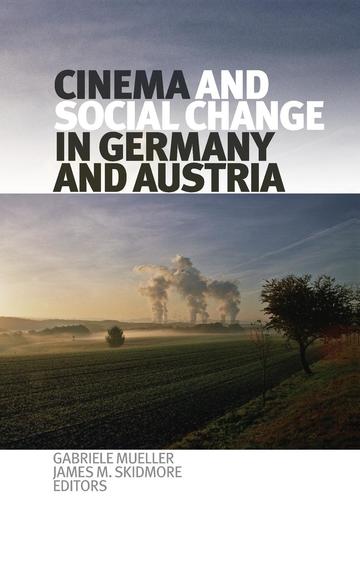During the last decade, contemporary German and Austrian cinema has grappled with new social and economic realities. The “cinema of consensus,” a term coined to describe the popular and commercially oriented filmmaking of the 1990s, has given way to a more heterogeneous and critical cinema culture. Making the greatest artistic impact since the 1970s, contemporary cinema is responding to questions of globalization and the effects of societal and economic change on the individual.
This book explores this trend by investigating different thematic and aesthetic strategies and alternative methods of film production and distribution. Functioning both as a product and as an agent of globalizing processes, this new cinema mediates and influences important political and social debates. The contributors illuminate these processes through their analyses of cinema’s intervention in discourses on such concepts as “national cinema,” the effects of globalization on social mobility, and the emergence of a “global culture.” The essays illustrate the variety and inventiveness of contemporary Austrian and German filmmaking and highlight the complicated interdependencies between global developments and local specificities. They confirm a broader trend toward a more complex, critical, and formally diverse cinematic scene.
This book offers insights into the strategies employed by German and Austrian filmmakers to position themselves between the commercial pressures of the film industry and the desire to mediate or even attempt to affect social change. It will be of interest to scholars in film studies, cultural studies, and European studies.
“German-language cinema has always been more diverse than film historians admit. The contributions in this volume challenge us to recognize this heterogeneity in recent, post-millennial films from Germany and Austria. Close readings elaborate how filmmakers respond to the tensions that arise as the national and European social landscape changes, with implications for film aesthetics, funding, production, distribution, and reception. At the same time these crisply written chapters redefine the emerging cinema landscape within transnational market dynamics and capital flow. I recommend this volume to readers seeking to understand the multiplicity and hybridity of the post-1990s ‘consensus’ cinema.”
“Der vorliegende Sammelband ist eine englischsprachige Publikation, die eine vielfältie und möglichst differenzierte Sicht auf das zeitgenössische deutsche und österreichische Kino anbietet.”
“Cinema and Social Change focuses on two key areas in articulating a vision of contemporary German cinema as both a product and agent of globalization. Its fifteen contributions rethink the category of the national, along with issues of hybridity, identity, and cultural specificity, the age of transnationalism; they also investigate possibilities for experimental aesthetics, unconventional styles, utopian thinking, subversive critique in an era charaterized by the commercial drive of global capital. Spanning the volume’s consideration of both nation and aesthetics is its emphasis on the way contemporary cinema screens history, including the Nazi past, GDR history, and the legacy of both 1968 and domestic terrorism. The grouping of chapters into rubrics, including ‘Challenging Viewing Habits,’ ‘Reassessing and Consuming History,’ and ‘Questioning Collective Identities,’ helps to focus attention on thematic continuities across the volume’s contributions, as does the excellent introduction by Mueller and Skidmore.... [A] major strenghth of the volume is its attention to significant filmmakers who have been under-researched in English-language scholarship.... The engaging and accessible writing and the inclusion of ample colour images make the volume especially appealing; a paperback version would lend itself to course adoption.” — Hester Baer, University of Oklahoma, Monatshefte
“‘Cinema by all means has to be dangerous!’ (279) When Barbara Pichler quotes the title of Marcus Seibert’s book of interviews with young Austrian filmmakers (2006), she also sums up the fifteen articles of this carefully edited volume, which presents a whole host of refreshing new perspectives on the most recent German-language film productions.... With its helpful abstracts, detailed notes, extensive reference lists, four-page filmography, and twelve-page index the book is an invaluable resource to anyone interested in German cinema in general and twenty-first century German cinema in particular. The articles present a forward-looking engagement with social issues that should serve as valuable reading in courses about contemporary Germany, Austria, and Europe, but also courses that want to explore European perspectives on globalization, or courses about the role of art in pursuit of social justice. They would provide a useful contrast, of course, in comparative courses with North American and other film productions. Indirectly the volume presents a strong case in favour of making all the films discussed available in region 1 format with English subtitles so that this exciting new German cinema can find the audience it deserves.”



